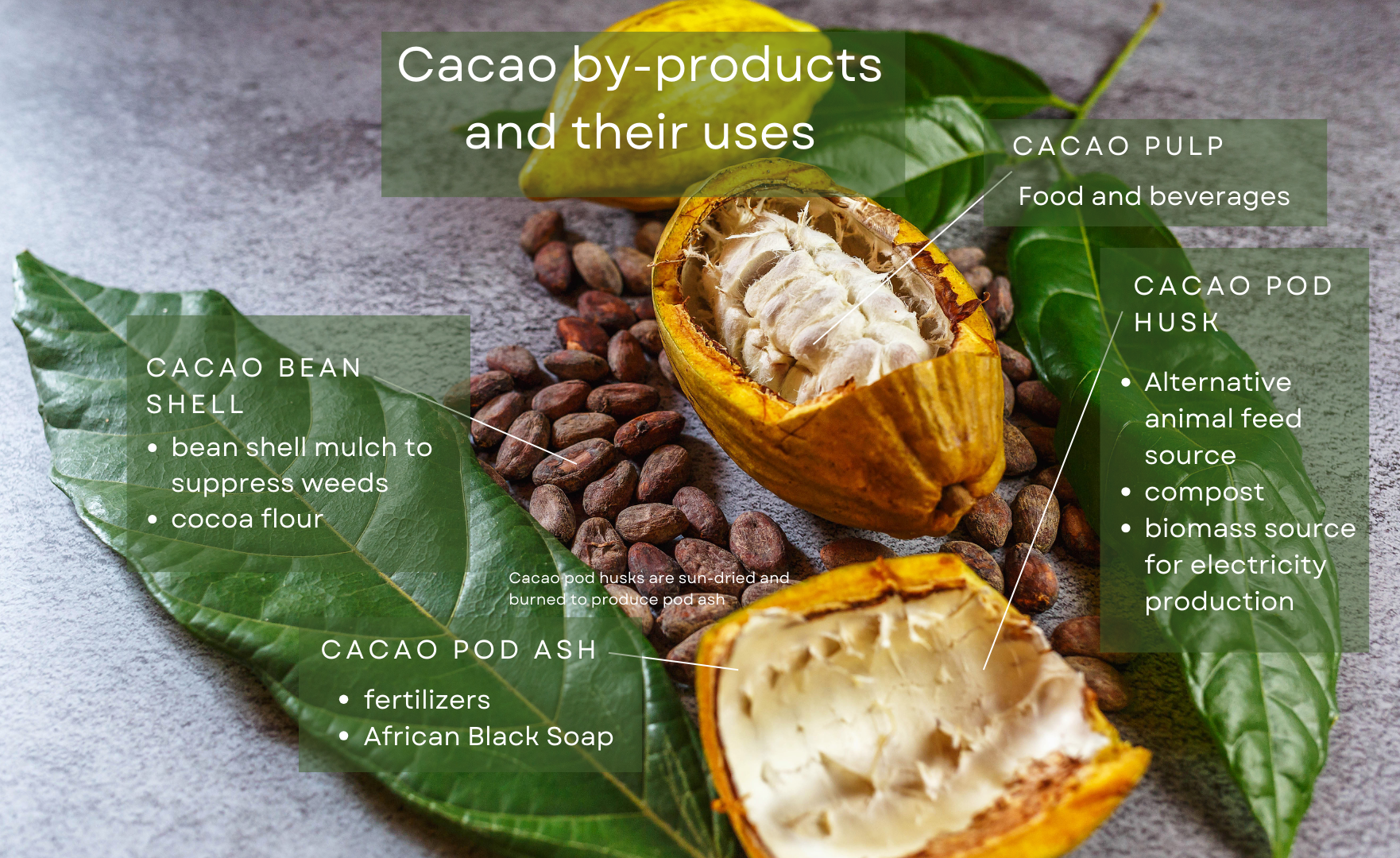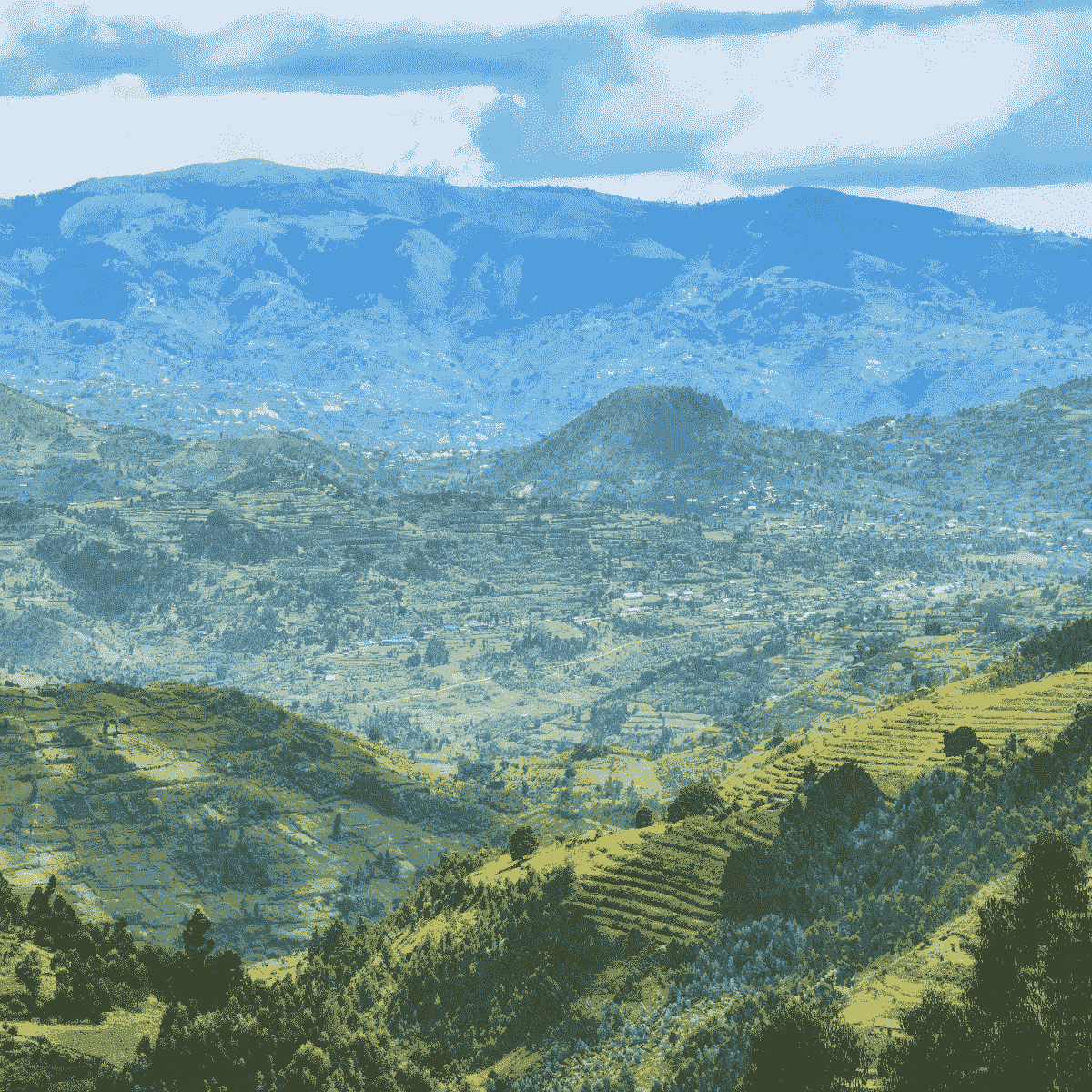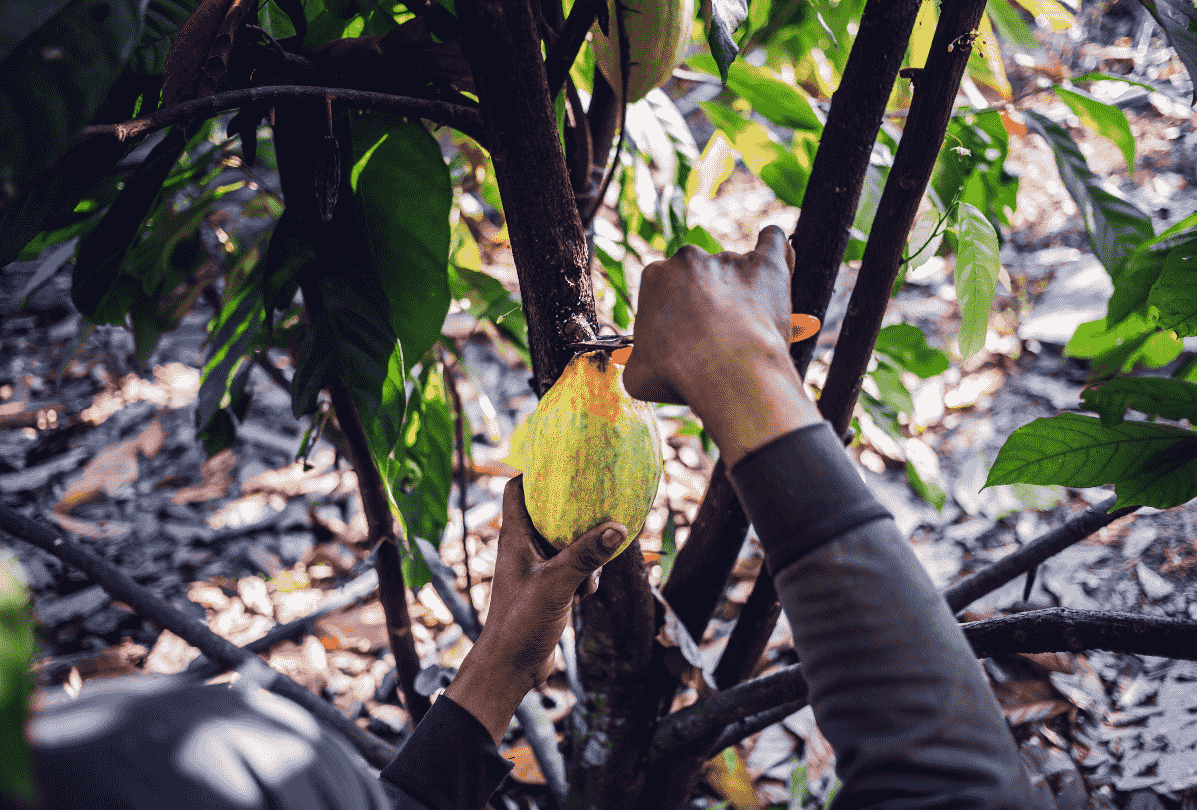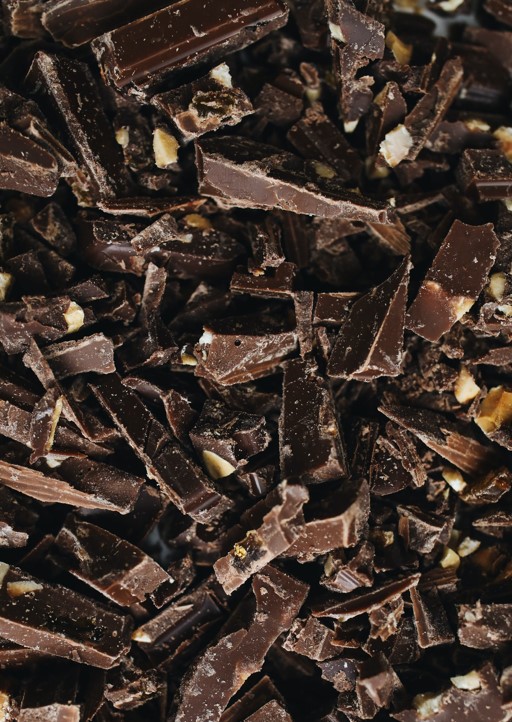Navigating the Opportunities and Challenges of Integrating Circularity into the Cocoa Value Chain
Article subtitle
Part 2
Part 2
Introduction
Our current food system has grown exponentially from the 1960s to today, revealing a world where the population has more than doubled, food production has tripled, and agricultural land use has surged by 15%. Yet, in the shadow of this abundance, a paradox emerges – while food insecurity remains high, Food loss and waste has surged alongside our growing food production.
The gravity of this situation intensifies when we recognise the symbiotic relationship between food loss, waste, and climate change – a reality increasingly highlighted by global agri-food experts. Agricultural production, a cornerstone of our sustenance, is revealed to be a significant contributor to greenhouse gas emissions, unsustainable resource use, and environmental pollution. Discarded food alone accounts for up to 8% of global greenhouse gas emissions, placing it as the third-largest producer of carbon dioxide on the world stage.
Furthermore, the expansion of agricultural land and forestry has profoundly impacted global biodiversity, with conservation efforts proving insufficient to counteract these trends. The escalating demands to feed the growing global population only exacerbates these challenges further. Addressing these complex issues requires integrated interventions that go beyond ambitious conservation and restoration efforts. Research indicates a pressing need for a comprehensive transformation of the food system, involving sustainable increases in crop yields and enhanced trade of agricultural goods on the supply side, and reduced waste of agricultural goods from field to fork on the demand side. PACE strives to achieve these transformative objectives, envisioning a food system where production regenerates nature, food is not lost or wasted, and commonly discarded resources are utilized productively.
As we embark on this exploration of global food challenges and their profound impact on our planet, it is imperative to zoom in on specific sectors that contribute to this intricate web of issues. Enter cocoa, a commodity that plays a significant role in both our daily indulgences and the broader conversations about sustainable agriculture and production.
This piece highlights how circular cocoa production can bring benefits to people, planet, and nature, and outlines the challenges that must be overcome to help bring about systemic change within the cocoa value chain.
Cocoa Production Contextualized
Chocolate is understood by most to be a delicious treat; however, the reality of cocoa production is far less sweet. The cocoa value chain is riddled with issues from environmental risks to poverty. These stand as significant barriers to change but also provide reason to reimagine an exploitative system.
Whilst most chocolate is consumed in Europe and America, 70% of all cocoa harvesting is concentrated in West Africa, with 60% produced in Ghana and the Ivory Coast. Worldwide, approximately 90% of cocoa is grown on 2 – 5-hectare smallholder farms. Many of these farmers live on less than $2 a day, well below the poverty line. By contrast, more than a third of cocoa beans are processed in Europe and controlled by only a handful of traders and refineries. In the end only 8% of the price of a chocolate bar goes to farmers.
Increasing global demand and declining production rates have placed a huge amount of pressure on the small holder farmers that prop the supply of cocoa. Climate change related changes in both temperature and rainfall levels have increased disease incidence, affecting cacao production in recent years. The cocoa value chain has driven deforestation in nearly every producing country; in Cote d’lvoire, it is estimated that 37% of cocoa comes from protected areas.
The nature of cacao harvesting is highly labour intensive, whereby each cacao pod must be individually harvested and opened. This process has created an environment where both small holder farms and commercial plantations are forced to frequently rely on child laborers. A staggering two million children are estimated to be working on cacao plantations worldwide.
The current situation indicates change is necessary and overdue. Next, we outline how circular economy and resource efficiency principles and practices can create a more sustainable and regenerative system that puts people at the centre and brings benefits to the environment.
Cocoa Waste and Resource Potential
During the production of cocoa, approximately 75% of the cacao fruit is discarded. This waste is made up of the cacao pod husk, cacao pulp (mucilage) and cocoa shells. Cacao pod husks are the external part of the cacao fruit, cacao pulp is the white substance that coats the cocoa bean and cocoa shells are the shells of the individual beans. By weight, this amounts to 700,000 tonnes of waste produced each year during the production of cocoa.
Despite high levels of discarded cacao husk, pulp and shell, there are several proven and productive uses of these commonly wasted resources.
The diagram below offers an overview of some of the uses of these waste products. For more detail you can check-out our blog on the uses of cocoa by products.

Maximizing utility through the efficient utilization of materials can be achieved by ensuring the productive use of the entire cocoa pod. This has benefits for both the environment and small holder farmers. Cocoa pod husk left directly on the field can spread disease by creating an environment where undesirable fungi grow, leading to diseases like black pod disease. Moreover, the elevated acidity level in the cocoa pulp means that disposing of it in the field can lead to soil acidification, resulting in the degradation of soil fertility.
Embedding circular economy practices will challenge current linear practices through the empowerment of local farmers with circular business practices that aid in developing processes that create more value and new revenue streams for producers at origin. In the context of the cocoa industry, this can help begin to change an ingrained dynamic and contribute to the diversification of farmer incomes for more resiliency in the face of climate change and market instability.
However, for change to take place, it is crucial to understand current waste management practices and identify the challenges that need to be addressed. This understanding is essential to ensure the successful implementation and scalability of innovative solutions.
Challenges
At present, the vast majority of cacao pod husk and cacao pulp generated from harvesting remains on the plantation and is usually left directly on the field where the pods are opened. In trying to understand why this is the case, several barriers to the productive use of cocoa waste immediately arise that help explain current practices.
Collection and transportation: Given the materials are spread across many small holder farms where infrastructure is poor, it is costly and difficult to transport to locations where the waste can be processed into products. This drives up the cost of removing the waste, a cost that is not balanced in benefits for the farmer.
Technology access: The cost of equipment and technology required to process cacao pod husks into animal feed, energy (briquettes and pellets) or compost (biochar) is high and availability is limited. This means this type of technology is currently inaccessible to farmers, many of whom live below the poverty line.
Demand: Although technical feasibility for many of these innovative solutions has been researched and, in many cases, proven, there are unclear and developing market demands for the end-use products. Consequently, financing and investment is difficult to secure.
In many instances the cost of transforming by-products/waste into a utilizable product outweighs the benefits for farmers to collect it. However, these issues cannot be overcome in isolation from each other; rather we must look to the intersection of policy, innovation, and investment to determine where to start and what must be done in unlocking the potential of the whole cocoa pod.
Innovation, Investment and Policy
Innovative models have already explored solutions to the challenge of accessibility within small holder landscapes. Decentralised methods of collection and mobile processing technology can be deployed to reach many small farms spread across rural landscapes. Although infrastructure still presents a challenge in many cases, it can support building a business case for the possibility of by-product and waste stream valorisation. In other cases, collectives can be formed to empower farmers and help build local ecosystems for valorisation.
Nonetheless, investment and financing are still required for any transition to a circular economy for food. Here, we can learn from investments already made in adjacent technologies in similar contexts such as pyrolysis plants for palm oil kernels. Furthermore, impact-linked finance could help quantify both the negative externality of existing waste management practices and the positive socio-economic benefit of by-product uses to accurately price returns on investment and change the cost/benefit structure.
New models and new investments that prioritize circularity require an enabling policy environment to succeed. Policies or subsidies that could be repurposed within a specific context could support the ease of valorisation of cocoa waste. For example, the bias towards export markers versus local markets could be a significant barrier for creating a market for cacao by-products within a local context and can be addressed by using subsidies to support cacao by-products to support their entry to local markets. In addition, current trade policy exists within a tight legal framework that determines that any product development of a by-product must work within the context of its primary product use. This is particularly challenging for the cacao industry as it is highly concentrated and controlled. The current policies do not create an enabling environment for innovative companies who are working to scale the market for cacao by-products. The implementation of flexible and enabling trade policies can help accelerate the adoption of circular practices within the cacao value chain.
Conclusion
The circular economy aims to create a more sustainable and regenerative system that benefits both the economy and the environment. Intervention in supply chains to promote food waste valorisation is essential to meet global sustainability targets. Prioritizing both limiting and enabling factors is important to amass effective ways of improving the productive use of commonly wasted resources in the cocoa value chain.




